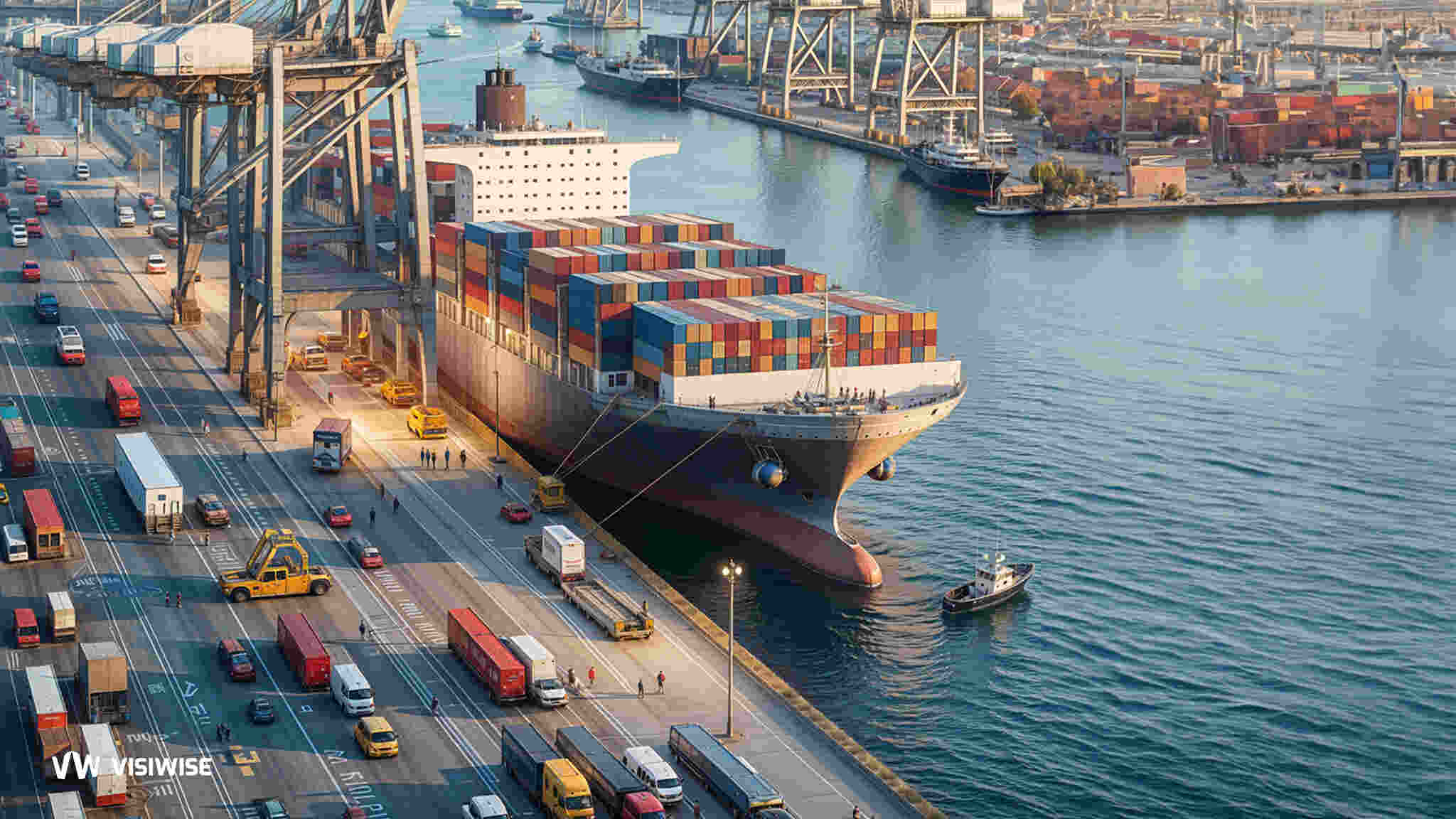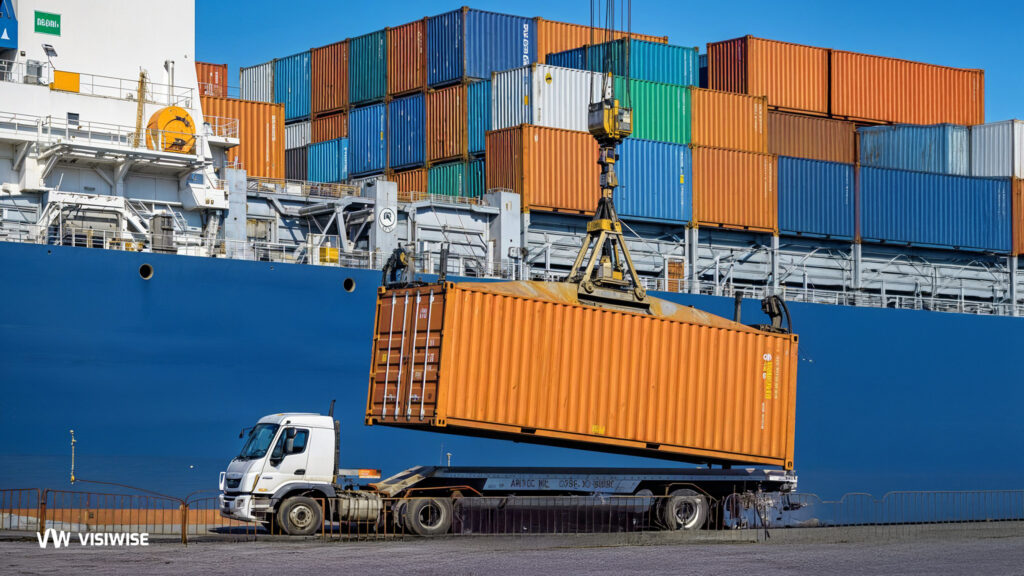In the complex world of shipping and logistics, understanding key terms and concepts is essential for smooth operations and efficient cargo management. One such critical term is the "Port of Discharge." This term refers to the specific location where goods are unloaded from a vessel, marking the transition from sea transport to land transport or final delivery. The port of discharge is a pivotal point in the supply chain, affecting delivery schedules, logistics planning, and overall shipping efficiency.
This article aims to provide a comprehensive understanding of the port of discharge, exploring its meaning, significance, and various synonyms used in the industry. By delving into the intricacies of this term, readers will gain valuable insights into how the port of discharge influences shipping processes and why it is a crucial element in international trade and transportation. Whether you are a logistics professional, a business owner, or simply interested in the mechanics of global shipping, this guide will clarify the importance and functionality of the port of discharge in today’s interconnected world.
What is meant by Port of Discharge?
The port of discharge is a critical term in shipping and logistics, referring to the port where cargo is unloaded from a vessel. This location marks the end of the sea voyage and the beginning of the cargo’s journey on land or through other means of transportation.
Alternative Names for the Port of Discharge
The port of discharge is sometimes referred to by other names in the industry. Common alternative terms include the "unloading port", "arrival port or simply "discharge port"
Port Vessel Discharge
Port vessel discharge refers to the actual process of unloading goods from a vessel at the port of discharge. This operation is a coordinated effort involving port authorities, dock workers, and logistics companies to ensure the safe and efficient handling of cargo.
Illustration of Port of Discharge
To illustrate, if a container is shipped from Shanghai to Los Angeles, Los Angeles would be the port of discharge. This port is where the container will be unloaded from the vessel, signifying the end of its sea transport.
What is Berthing in Shipping?
In shipping, berthing is the process of maneuvering a cargo ship into its designated docking position at a port. Unlike simply pulling up and unloading, the vessel must first secure a “parking spot” at a pier, quay, or dock.
Berthing involves carefully navigating the ship to align with the assigned berth, allowing cargo operations to begin safely. This process is essential for efficient port operations and requires precise coordination among the ship’s crew, port authorities, and terminal operators.
Imagine it as parallel parking a large ship in a tight space without disrupting port traffic or damaging infrastructure. It’s a complex maneuver that demands skill, effective communication, and careful planning to ensure smooth operations once the vessel reaches port.
What is the difference between port and berth?
The terms port and berth refer to different aspects of maritime operations:
Port: A port is a large area where ships dock, load, and unload cargo. It encompasses the entire facility, including docks, piers, warehouses, cranes, and other infrastructure. Ports are strategically located to facilitate trade and transportation, often serving as major hubs in shipping networks. They can accommodate multiple vessels simultaneously and include various services and facilities for cargo handling, customs, and logistics.
Berth: A berth is a specific location within a port where a particular vessel is docked or moored. It is the designated space alongside a pier, quay, or dock where a ship is secured for loading, unloading, or repairs. Each berth is assigned based on the size of the vessel, the type of cargo, and operational requirements. Berths are integral parts of the port, providing the precise spots where ships are positioned during their stay at the port.
What is laytime at the port of discharge?
Laytime, known also as “Destination Free Time” at the discharge port, refers to the agreed period during which the shipowner allows the charterer or cargo owner to unload the cargo after the vessel arrives at the discharge port. This period is typically specified in the charter party agreement and is crucial for both parties, as it affects the scheduling and costs associated with cargo handling.
If unloading takes longer than the agreed laytime, the charterer may incur demurrage charges, which are additional costs paid to the shipowner for the extra time the vessel spends in port beyond the allotted laytime. Conversely, if the unloading is completed within the laytime, the charterer avoids such charges, and the shipowner benefits from the vessel being able to move on to its next assignment promptly.
What is demurrage at the port of discharge?
Demurrage at the discharge port refers to the fees incurred by the charterer or cargo owner when the unloading of cargo takes longer than the agreed laytime specified in the charter party agreement. Essentially, if the vessel remains in port beyond the allotted time for discharge, the shipowner can charge demurrage fees to compensate for the delay.
These charges are intended to cover the costs associated with the vessel being tied up at the port longer than planned, including potential lost revenue from other voyages or operational disruptions. Demurrage rates and terms are usually outlined in the charter party and are negotiated between the shipowner and charterer.
Port of Discharge as a Key Shipping Term
In shipping terminology, the port of discharge is an essential term used in contracts and shipping documents. It specifies the destination port where the cargo will be delivered from the ship, helping to outline the responsibilities and obligations of the shipping parties.
This term is key in determining several aspects of the shipping process, including:
- Unloading: The port of discharge is where the cargo will be removed from the ship. This is the location where the responsibility for the cargo transitions from the carrier to the consignee, though actual responsibility can depend on the specific terms of the contract.
- Customs Clearance: At the port of discharge, the cargo will go through customs procedures. This involves inspections, documentation, and payment of any applicable duties or taxes.
- Costs and Responsibilities: The shipping contract often outlines who bears the costs associated with unloading and customs clearance. Depending on the Incoterms (International Commercial Terms) used in the contract, these responsibilities can vary:
- FOB (Free on Board): The seller covers costs up to the port of discharge, but the buyer is responsible for unloading and further transportation.
- CIF (Cost, Insurance, and Freight): The seller covers the cost of freight and insurance to the port of discharge, but the buyer is responsible for unloading and inland transportation.
- Further Transportation: Once the cargo is unloaded at the port of discharge, it might need to be transported further inland to the final delivery address. The shipping contract might specify whether the seller or buyer is responsible for this subsequent transportation.
- Dispute Resolution: Discrepancies or issues related to the port of discharge (such as delays or damages) can affect dispute resolution. Clearly defining the port of discharge in the contract helps in managing such issues by providing a clear point of reference.
- Documentation: Shipping documents like the Bill of Lading will specify the port of discharge. This documentation is crucial for both the carrier and consignee as it confirms where the cargo will be unloaded and the associated terms and conditions.
Port of Discharge Number (Seaport Code)
The port of discharge number, known as a seaport code or UN/LOCODE, is a unique five-character identifier assigned by the United Nations Economic Commission for Europe (UNECE) to seaports and inland ports globally. These codes, which are comprised of two letters for the country and three letters for the specific port city or location, are maintained by UNECE and currently encompass over 103,030 locations across 249 countries. The port code is used in shipping documents and tracking systems to precisely specify the port where cargo is to be discharged.
Benefits of Using Seaport Codes
Reduces Errors and Misunderstandings in Port Identification
Standardized and universally recognized port codes eliminate the need for different naming conventions or translations when referring to ports. This ensures that all parties involved in the logistics process are aligned, saving time and money while preventing delays and errors.
Simplifies Customs Clearance Procedures
Customs authorities globally use port codes to identify ports of entry and exit, enabling them to swiftly verify the origin and destination of goods. Clearly visible port codes expedite the customs clearance process and reduce the risk of delays or inspections.
Port Of Discharge Vs Final Destination
The terms " Port of Discharge " and " Final Destination" are commonly used in shipping and logistics, and they refer to different stages in the transportation process:
Port of Discharge: This is the port where the cargo is unloaded from the vessel. For international shipments, this is usually a port in the destination country. After the cargo arrives at the port of discharge, it needs to go through customs clearance before it can be further processed or delivered.
Final Destination: This refers to the final destination where the cargo is delivered to the consignee (the recipient of the goods). The final destination is typically the address specified in the shipping or delivery instructions, which could be a warehouse, a business address, or a residence. It is the endpoint of the transportation journey, and it often involves additional logistics beyond the port of discharge, such as inland transportation.
In some shipping contracts, the port of discharge and the final destination can be the same location. This situation typically occurs when the consignee’s delivery address is directly at or very close to the port of discharge. Here’s how it can happen:
- Direct Port Delivery: The consignee may have facilities or operations located at or very near the port of discharge. In such cases, the cargo can be delivered directly to the consignee’s premises from the port.
- Simplified Logistics: For efficiency or logistical reasons, the contract might specify that the cargo should be delivered to the port of discharge, and no further inland transportation is required. This is often the case for large businesses with operations at major ports.
- Contractual Terms: The shipping contract might stipulate that the final destination is the port of discharge to simplify the agreement, especially if the consignee is responsible for further transportation from the port to their final location.
In these situations, both terms effectively point to the same place, meaning the responsibilities for unloading, customs clearance, and sometimes the final delivery are all managed at the port. This setup can streamline the shipping process, but it’s crucial for all parties involved to clearly understand the terms of the contract to avoid any confusion or additional costs.
What Does POD Stand for in Documents: Port of Discharge or Port of Dispatch?
In shipping and logistics documents, "POD" most commonly stands for "Port of Discharge." This term refers to the port where the cargo is unloaded from the vessel, representing the final destination of vessel. Although "Port of Dispatch" is a relevant term in logistics, it is not typically abbreviated as "POD." Therefore, in most documents, "POD" denotes the Port of Discharge.
Distinguishing Port of Discharge from Port of Dispatch
While "POD" is predominantly used to refer to the Port of Discharge, it’s important to distinguish it from the Port of Dispatch. The Port of Dispatch, known also as “Port of Lading” and “Port of Loading” is where the cargo is initially shipped or dispatched from, marking the beginning of the logistics process. Here’s how they differ:
- Starting Point: The Port of Dispatch is where the cargo’s journey begins. It is the port where goods are loaded onto the vessel and enter the shipping network.
- Shipping Origin: Identifying the Port of Dispatch accurately is essential for tracking the shipment from its origin. It helps in monitoring the entire supply chain from start to finish.
- Logistics Planning: For logistics providers, knowing the Port of Dispatch is crucial for planning and managing the initial stages of transport. It ensures proper routing of the cargo and adherence to timelines.
Conclusion
Understanding the port of discharge is fundamental in maritime transport and logistics. This term denotes the specific port where cargo is unloaded from a vessel, marking the end of the sea voyage and the start of its journey by land or other means. It is a critical juncture in the supply chain, influencing delivery schedules, logistics planning, and overall shipping efficiency.
By exploring the nuances of the port of discharge, including its alternative names, the berthing process, and its distinction from other terms like final destination and port of dispatch, we gain a comprehensive view of its role in global shipping. Additionally, understanding related concepts such as laytime, demurrage, and the significance of seaport codes further illuminates its importance.
This guide provides valuable insights for logistics professionals, business owners, and anyone interested in global shipping. A clear grasp of the port of discharge and associated terms enhances the ability to navigate the complexities of shipping and ensures smoother operations in the interconnected world of international trade.



